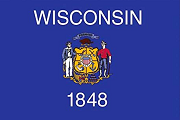
|
R.9-10
|
||
|
Key Ideas and Details
|
||
|
Text evidence
Text evidence in literary passages
Text evidence in nonfiction passages
|
||
|
Text evidence
Text evidence in literary passages
Text evidence in nonfiction passages
|
||
|
Theme
Central idea
Supporting evidence
Text development
|
||
|
Theme
Central idea
Supporting evidence
Text development
|
||
|
Development of ideas in literary passages
Arguments
Development of ideas in nonfiction passages
|
||
|
Development of ideas in literary passages
Arguments
Development of ideas in nonfiction passages
|
||
|
Craft and Structure
|
||
|
Vocabulary in context
Figurative language
Word choice and usage
Rhetorical strategies
Tone
|
||
|
Vocabulary in context
Figurative language
Word choice and usage
Rhetorical strategies
Tone
|
||
|
Analyze structure in literary passages
Argument development
Analyze development in nonfiction passages
|
||
|
Analyze structure in literary passages
Argument development
Analyze development in nonfiction passages
|
||
|
Audience and purpose
Arguments
Rhetorical strategies
Literary elements
Literary devices
Nonfiction passages
|
||
|
Audience and purpose
Arguments
Rhetorical strategies
Literary elements
Literary devices
Nonfiction passages
|
||
|
Integration of Knowledge and Ideas
|
||
|
|
||
|
|
||
|
Arguments
Supporting evidence
Logical fallacies
|
||
|
Arguments
Supporting evidence
Logical fallacies
|
||
|
W.9-10
|
||
|
Text Types and Purposes
|
||
|
|
||
|
|
||
|
|
||
|
|
||
|
|
Organization
Supporting evidence
Counterclaims
Logical fallacies
|
|
|
Organization
Supporting evidence
Counterclaims
Logical fallacies
|
||
|
|
Organization
Development and support
Plagiarism
Formatting
|
|
|
Organization
Development and support
Plagiarism
Formatting
|
||
|
|
|
|
|
|
||
|
|
||
|
|
Organization
Text structure
Persuasive strategies
Creative techniques
Write concisely
|
|
|
Organization
Text structure
Persuasive strategies
Creative techniques
Write concisely
|
||
|
|
|
|
|
|
Word choice and usage
Sensory details
|
|
|
Word choice and usage
Sensory details
|
||
|
Production and Distribution of Writing
|
||
|
Audience and purpose
Organization
Development and support
|
||
|
Audience and purpose
Organization
Development and support
|
||
|
Organization
Revision
Editing
|
||
|
Organization
Revision
Editing
|
||
|
|
||
|
|
||
|
|
|
|
|
|
||
|
|
|
|
|
|
||
|
|
|
|
|
|
||
|
Inquiry to Build and Present Knowledge
|
||
|
|
||
|
|
||
|
Analyze sources
Supporting evidence
Plagiarism
Citations
|
||
|
Analyze sources
Supporting evidence
Plagiarism
Citations
|
||
|
Tone
Theme
Short stories
Supporting evidence
Analyze arguments
|
||
|
Tone
Theme
Short stories
Supporting evidence
Analyze arguments
|
||
|
L.9-10
|
||
|
Knowledge of Language
|
||
|
|
||
|
|
||
|
|
|
|
|
|
||
|
|
Audience and purpose
Tone
Word choice and usage
Persuasive strategies
Creative techniques
|
|
|
Audience and purpose
Tone
Word choice and usage
Persuasive strategies
Creative techniques
|
||
|
|
|
|
|
|
||
|
|
|
|
|
Vocabulary Acquisition and Use
|
||
|
|
||
|
|
||
|
|
|
|
|
|
|
|
|
|
||
|
|
||
|
|
|
|
|
|
Tone
Rhetorical strategies
|
|
|
Tone
Rhetorical strategies
|
||
|
Synonyms and antonyms
Vocabulary in context
Foreign words and expressions
Prefixes
Suffixes
Greek and Latin roots
Word choice and usage
|
||
|
Synonyms and antonyms
Vocabulary in context
Foreign words and expressions
Prefixes
Suffixes
Greek and Latin roots
Word choice and usage
|
||
|
Conventions of Standard English
|
||
|
|
||
|
|
||
|
|
|
|
|
|
Phrases
Clauses
|
|
|
Phrases
Clauses
|
||
|
Capitalization
Complete sentences
Formatting
Semicolons, colons, and commas
Frequently confused words
Commonly misspelled words
Homophones
|
||
|
Capitalization
Complete sentences
Formatting
Semicolons, colons, and commas
Frequently confused words
Commonly misspelled words
Homophones
|
||